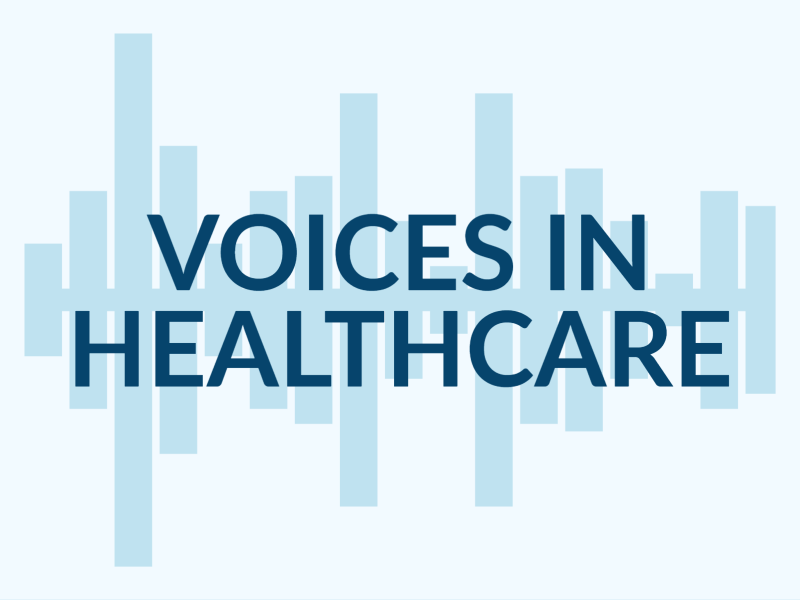Op-Ed: Mass. Hospitals are Teetering on the Edge

The following opinion piece, penned by MHA President & CEO Steve Walsh, was published by CommonWealth Beacon on November 6.
Mass. hospitals are teetering on the edge
We are running out of time to accept – and fix – this crisis
By Steve Walsh
President & CEO, Massachusetts Health & Hospital Association
WE GET IT: no one wants to imagine their local hospital struggling, much less the entire healthcare sector that is there for us during our most vulnerable moments and has propped up Massachusetts’ global leadership for decades. It’s unthinkable.

But the most difficult realities are oftentimes the most important to accept. Now is one such time, as the state’s healthcare system buckles under the weight of unsustainable cost pressures and is showing once unimaginable signs of peril.
Ask any local healthcare leader or caregiver, and they will tell you that our system is in a vastly different place than it was just a few short years ago. Patients are older, sicker, and in need of longer stays. Workforce and capacity constraints have reached a boiling point. And time-insensitive administrative roadblocks are fueling wait times and backups.
All of these factors are intertwining to create a crisis that is slowly destroying care delivery for providers and their patients. Yet, despite its magnitude, it is still not fully understood outside of those who are struggling to keep hospitals afloat each day, 24/7, 365. Even worse, it has given oxygen to crisis-deniers who are more interested in finger-pointing than collaboration.
Solutions start with acceptance. Given the stakes, it is imperative that everyone involved in healthcare – from insurers to business partners to policymakers – recognize the new reality of hospital finances, move past out-of-touch arguments that thrive off blame, and help us restore a basic sense of stability to the Commonwealth’s most essential sector. There is simply no other option but for all of us to be working from the same set of facts if we want to control costs and keep patient services off the chopping block.
It starts with accepting these three things:
Hospitals are falling deeper into the red. The state’s new data paints a sobering picture: the median operating margin among hospitals across the state dipped to negative 0.9 percent in June. This telltale metric for hospital performance is moving in the wrong direction; March’s negative 0.1 percent margin was already cause for alarm. Even those who have occasionally managed to eke out a small margin are far weaker than they were before the pandemic.
There are real-life consequences behind these numbers. Healthcare organizations are increasingly finding themselves in the middle of decisions regarding cutbacks, layoffs, and the balance between basic survival and investment in the future.
It has become impossibly expensive to operate a hospital. Provider organizations have been shouting from the rooftops about how their financial burdens are coming from every angle and affecting access and costs.
Labor expenses account for at least 60 percent of hospitals’ overall costs, and they have risen sharply in recent years in the wake of 15,000-plus job vacancies. Organizations have spent more than $3 billion on temporary workers since 2019 in order to fill the gaps and keep care beds open. Putting the stability of patients and communities ahead of their own is why Massachusetts ranked first in the country for preventable loss of life throughout the pandemic, but the bill for that effort has come due.
Additionally, nearly 2,000 patients are stuck in hospitals because they cannot be placed in the next level of care they need (such as a nursing home or rehab facility). Massachusetts hospitals are now spending more than $400 million each year to provide these individuals with the extra, unpaid care they need. What’s more, the unnecessary administrative burdens behind many of these backups – including excessive prior authorization requirements – are resulting in $1.75 billion in cost waste to the system each year.
Because our system is designed to pay hospitals based on volume, not how long patients stay, the growing trend of sicker patients has impacted bottom lines. And unlike other sectors, providers cannot simply pass off skyrocketing supply and inflationary costs to consumers.
One recent CommonWealth Beacon op-ed inquired “how exactly hospitals are burning through so much cash.” To anyone willing to look beyond their own self-interest, these factors speak for themselves – and they have only worsened in the midst of Steward Health Care’s downfall.
Hospitals’ financial demands are only growing. The Health Safety Net, which funds care for uninsured patients in Massachusetts, is projected to face a deficit of up to $400 million between this year and next. These are deficits not seen since the Commonwealth’s passage of universal healthcare in 2006.
Hospitals are on their own in picking up the tab for the historic shortfalls, without contributions from insurers, state government, or other elements of the healthcare ecosystem. The reasons behind this trend are multifold: a rising volume of uninsured patients, increasing state withdrawals from the fund, and the financial instability of Steward’s former hospitals all play a role.
Add nearly $100 million in MassHealth rate cuts to the mix, as well as the pharmaceutical industry’s threats to the 340B drug pricing program, and it is easy to see how things have gotten so bad so fast.
Massachusetts hospitals have helped retain our status as the nation’s number one healthcare system for access and affordability, but it is coming at a steep and unsustainable cost. As one of the largest purchasers of employee health insurance, they also acutely feel the pains of rising expenses from the operating table to the kitchen table.
We collectively as a Commonwealth have simply not done enough to lift our providers out of economic peril. The cost of inaction is now plain to see for every patient and insurance purchaser. There are plenty of forums to discuss solutions, whether they surround workforce reforms, administrative simplification, or transformation of care delivery so Massachusetts can continue to lead on quality, access, and affordability.
But for today, our immediate ask is so much simpler. Hospitals and their caregivers merely want their mounting challenges to be understood. They want to know that others in the healthcare space are working with the same sense of urgency (and at the very least not using their voice to chip away further). But whether others are willing to help or not, hospitals will, above all else, defend the daily wellbeing of their patients and workers at a time of serious uncertainty.

 Massachusetts Health & Hospital Association
Massachusetts Health & Hospital Association